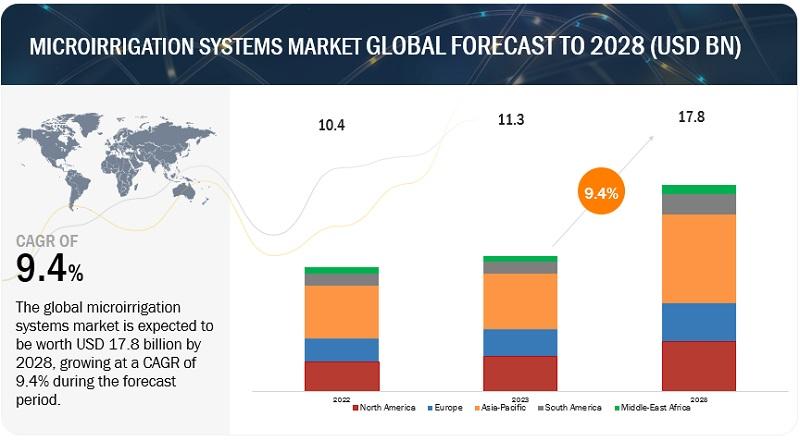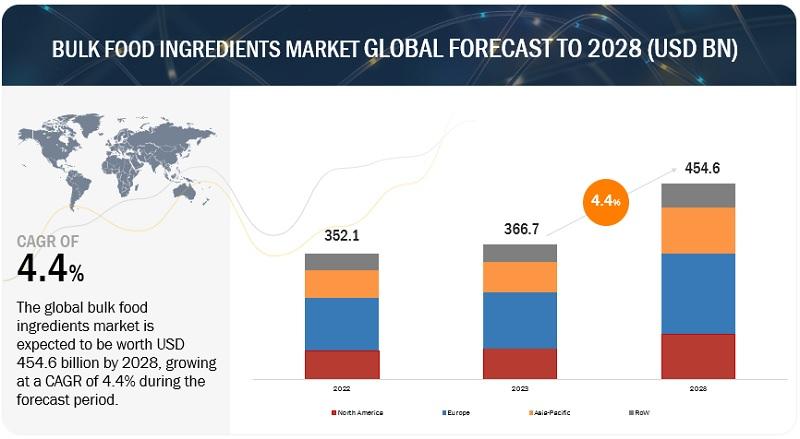The global biorational pesticides market will grow from USD 7.5 billion in 2023 to USD 15.1 billion by 2028, growing at a CAGR of 15.2% during the forecast period. The growing awareness about the harmful effects of synthetic pesticides on human health and the environment has led to a rising demand for biorational pesticides.
Key Players in Biorational Pesticides Market
- BASF SE (Germany)
- Bayer AG (Germany)
- UPL (India)
- FMC Corporation (US)
- Syngenta AG (Switzerland)
- Novozymes A/S (Denmark)
- Sumitomo Chemical Co., Ltd (Japan)
Request Sample Pages: https://www.marketsandmarkets.com/requestsampleNew.asp?id=57324225
Market Dynamics
Drivers
- High costs associated with development of new synthetic crop protection products
- Chemical pesticide bans and awareness programs by government agencies
- Increase in acceptance of organic food products
Restraints
- Technological limitations for use of biological products
- Ineffectiveness of biological insecticides
Opportunities
- Advancements in microbial research undertaken by key players across regions
- Resistance of pests to crop protection chemicals
- Rising consumption of pesticides in developing countries
Challenges
- Preference for chemical pesticides in developing countries
- Delayed effect of biorational pesticides on pests
The utilization of microbials in the production of biorational pesticides is anticipated to drive market growth
The expansion of the biorational pesticides market involves utilizing microbials like bacteria, fungi, viruses, and protozoa to develop environmentally friendly solutions for pest control. These microorganisms function with precise modes of action, targeting pests while minimizing harm to the environment and non-target organisms. They're incorporated into diverse formulations, including microbial-based insecticides, fungicides, and nematicides.
For instance, Bacillus thuringiensis (Bt), a renowned microbial insecticide, demonstrates the market's focus on eco-friendly solutions. Its production of insect-toxic proteins specifically targets certain pests while remaining harmless to humans, animals, and beneficial insects. Bt-based products, effectively employed in agriculture and mosquito control programs globally, exemplify the market's trend towards sustainable pest control measures.
Liquid formulation segment exhibits highest CAGR of 15.3%, driving biorational pesticides market growth
Liquid formulations of pesticides present distinct advantages over their dry counterparts, propelling their increased market demand. Their ease of application stands out as a primary factor, as liquids allow for more uniform spraying over large areas, ensuring enhanced coverage, particularly on uneven or densely foliated surfaces. This attribute facilitates efficient application, contributing to better pest management outcomes.
Inquiry before buying: https://www.marketsandmarkets.com/Enquiry_Before_BuyingNew.asp?id=57324225
North America accounts largest share in the biorational pesticides market and witnessing growth due to tight regulations and limitations on the application of conventional chemical pesticides
The agricultural sector in North America is characterized by a variety of farming systems, including large-scale commercial operations and smaller organic and specialty crop farms. This diverse landscape creates favorable conditions for the utilization of biorational pesticides across a wide range of crops.
In North America, regulatory bodies have erected robust frameworks, rigorously scrutinizing the usage of conventional pesticides, fueled by apprehensions encompassing safety and environmental repercussions. These stringent measures have triggered a surge in the quest for biorational pesticides, esteemed for their perceived safety and eco-friendly attributes. A significant milestone unfolded when the U.S. Environmental Protection Agency (EPA) championed the cause of shielding children and agricultural workers from the perils of a hazardous pesticide with ties to enduring cognitive impairments.






Comments